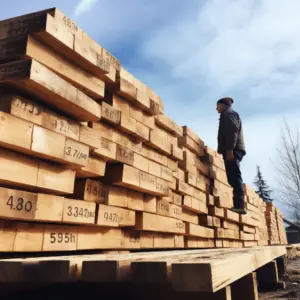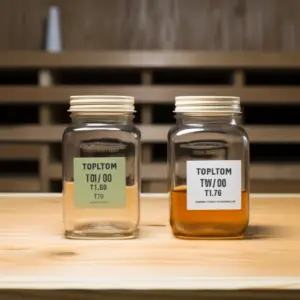TWP 100 and TWP 1500, They are both leading oil-based wood preservative formulas manufactured by Gemini / Amteco Coatings and distributed by the online dealer TWPStain.com.
The main difference between the two products is in the formulations but both are premium wood staining products.
Table of Contents
Is wood staining essential?

Wood is one of the most readily available materials for building and construction. Great patterns convey warmth, simplicity, and nature. As an organic compound, molds, algae, water, heat, light, pests, and other factors can harm it.
Wood may be used to build many things, big and tiny. All of these will experience air, water, heat, and chemicals.
Wooden furniture will degrade, rot, darken, warp, fracture, and break without protection, leaving it worthless and requiring to be replaced. Wood staining is the only technique to prevent this. Wood can survive decades if treated properly. In addition, stained wood looks better than bare wood. Consider what color the coloring compound will give the wood and whether it has the desired aesthetic.
TWP 100 vs TWP 1500’s
TWP 100 is the original wood preservative brand in the series and has been a leading formula for well over 25 years.
It was however restricted for use in some states necessitating improvements with regard to its chemical composition.
TWP 1500 is the latest entrant in the series which was formulated to improve on the previous formulas and address safety concerns. It is currently available in every state.
VOC Levels
VOC or Volatile Organic Compounds are organic compounds that have high pressure in their vaporous form at room temperature.
Most VOCs are found naturally in the environment since they are produced by animals and plants as part of their physiology.
Anthropogenic VOCs on the other hand are created and dissipated by human activity such as in the making and use of synthetic products and chemicals like wood preservatives.
In the short term, they do not appear to affect health and the effects on humans and the environment are still being investigated but in the long term, they have been found to cause or accelerate health problems and do considerable damage to the environment.
TWP 100 has a VOC concentration of about 550 grams/liter which is deemed very high. TWP 1500 has a VOC saturation of 350 grams/liter, which is acceptable in most states.
Availability in the Different States
Each state determines the safety levels of certain chemical products. A number of states have stringent VOC level restrictions preventing the distribution of chemicals that exceed specific levels.
Though both TWP 100 and TWP 1500’s are in production and are registered with the Environmental Protection Agency (EPA), TWP 100 is not approved for distribution in 36 states due to its high VOC levels that fall outside the approved limits.
TWP 1500 is approved and available in all fifty states.
Improved Formulation.
Though TWP 100 is an excellent wood preservative, and both offer outstanding protection, TWP 1500 is the superior product.
TWP 1500 was formulated using the latest technologies and raw materials to conform to the recommended VOC regulations and also to improve its efficacy as a wood preservative.
Share the following similarities:
- Both TWP 100 and TWP 1500 stop water from being absorbed and shed water well. Neither one is likely to grow mold, algae, or mildew.
They make a beautiful finish that looks natural by showing the wood’s grain and keeping the wood’s natural look. - Both TWP 100 and TWP 1500 do a good job of keeping their original colors. Most paints and sealants for wood change color in a way that can be seen over time.
- Both should have two wet coats for the best effects. The first one to get the most absorption and coverage, and the second one to make the finish smooth and even. You don’t need a handyman to help you with these spots. They are easy to put on and make smooth. If you need to reapply, you can do very little scraping, if any at all, and the process is just as easy as the first time.
- Neither TWP 100 nor TWP 1500 should be used on wood that is brand new. New wood is hard and doesn’t bend or soak up water easily. Both of these colors need to go deep into the wood’s grain. Wood that is less than five months old won’t take stains well and will create bumps that make the finish look bad. Also, if the dye doesn’t soak in, the wood won’t get the color you want, which will make it look bad.
- We don’t suggest using TWP 100 or TWP 1500 indoors. Even though the VOC levels in TWP 1500 are much lower, the air pressure inside is higher, which makes it easier to breathe in more harmful chemicals with each breath. There are solutions for wood that are made for use inside.
TWP 1500 outperforms TWP 100 in the following ways:

- TWP 1500 offers better UV light protection than the 100 version.
- TWP 100 comes in 6 colors while the TWP 1500 has 8 colors to choose from.
- Due to slight differences in the formula, 1500 gets absorbed and dries slower taking anywhere between 4-12 hours. TWP 100 seeps into wood faster and dries in 2-6 hours.
- TWP 100 is 30-40pc solid while TWP 1500 is more viscous at 60-70pc solid content.
- TWP 1500 holds up against wear and peeling much better than TWP 100 which will begin to show signs of disrepair at the two-year mark. TWP 1500 can hold on longer and in top-notch condition compared to TWP 100.
- TWP 1500 VOC levels are significantly lower than those in TWP 100.
Bottom line: TWP 100 Vs TWP 1500’s?
In low VOC states, TWP 100 is unavailable so the only option is to use TWP 1500.
If both are available where you are, either stain offers great wood preservation but it would be better considering all factors to go for TWP 1500.
TWP 1500 is safer to use, lasts longer, gives a better overall finish, offers better UV protection.


